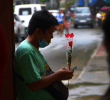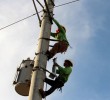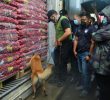TAGUM CITY — Netizens were outraged to learn that the government’s proposed internet speed for its free public wireless fidelity across the country will only offer an average speed of 256 kbps (kilobytes per second), a speed which internet users compare to a walking toddler.
“With this speed, everything is so limited because the system has limitations already,” said Joan Gomez, 22, an internet user.
On Friday, the Department of Science and Technology (DOST)—the implementing agency of the Free Wi-Fi Internet Access in Public Places—announced that the public bidding of the ambitious project will commence by the end of this month.
In a television interview Thursday, DOST’s Nestor Bongato said the government will tap the services of the country’s telecommunication companies instead of erecting government-owned communication towers.
Ramon Fuentes, 35, an IT consultant in this city, said DOST’s project will only affect small changes in its bid to reduce the so-called the “digital divide” among Filipinos citing infrastructure problems.
“It is very hard to construct communication towers in this country that is an archipelag so this poses a great challenge on part of the government,” says Fuentes.
He adds people in rural areas where there is no internet connectivity would only suffer the same problem as metropolitan areas are experiencing–the slow and sporadic internet connection–since DOST will rely on the private telecommunication companies.
In the Philippines, three major telcos are known also as internet service providers namely: Globe Telecommunications, SMART Telecommunications and Philippine Long Distance Companies.
“It is high time that we demand greater transparency from the telecommunication internet service providers that should have a minimum service reliability of 90%,” netizen Justin Gomez, 26, said.
Another netizen, Myla Williams, 20, a college student, said “the government should consider inviting foreign internet service providers to avoid monopoly.”
“The problem is our telco industry here is highly monopolized. There is no competition at all because we were given a limited option,” she said.
A DOST document obtained by Davao Today said that “project is directly in line with the “Internet For All” thrust identified in the Philippine Digital Strategy 2011-2016.”
It said the project has a total of P1.408 billion budget, as approved in the 2015 General Appropriations Act (GAA), much higher than the proposed P339 million.
The DOST-ICT office said “it will serve 105,000 concurrent users with 256 kbps each, which is the lowest prevailing speed requirement for “broadband” service.” A data volume based Fair Usage Policy shall also be implemented to promote an equitable distribution of the public service.
Simon Palabrica, 35, an IT college professor and an internet café owner, however, belittled the guaranteed speed that the government is offering, saying a user would have a hard time playing YouTube videos with the 256 kbps.
“The 256 kbps speed plan will actually give you 32KB per second speed. That’s too slow considering that a user is in “multi-tasking mode”. I don’t think it is a quality speed for an average user,” he said.
The Philippines has one of the slowest average connection speeds in Asia Pacific, ranking 103rd with 2.5 mbps, according to Akamai 2014 report.
The Department of Science and Technology is targeting July this year for the initial rollout of the government’s ”Free Wi-Fi Internet Access in Public Places”. (davaotoday.com)










